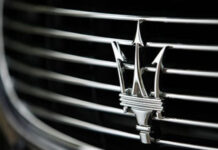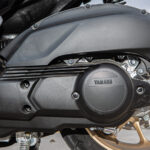The tightening regulations imposed by governments worldwide on car emissions have created an urgent need for vehicles that utilize clean energy instead of fossil fuels. As electric and hybrid cars gain popularity, the automotive industry has introduced various innovations to meet the specific requirements of these vehicles. One notable innovation comes from Continental, the world’s leading tire manufacturer, who has developed a new wheel concept that addresses the limitations and enhances the performance of electric cars.
Understanding the Braking System in Electric Cars
First and foremost, it is crucial to examine the braking system of electric cars. In these vehicles, the braking system combines friction braking with regenerative braking. During deceleration, the car’s kinetic energy is converted into electrical energy, thereby increasing the driving range. Unlike traditional cars, pressing the brake pedal does not solely engage the friction braking system. Drivers should minimize the use of friction braking while driving.

An issue arises when sudden braking is required, and the deceleration torque provided by the electric motor is insufficient. In such circumstances, friction braking becomes necessary. It is crucial for drivers to have a reliable braking system to ensure safety. However, due to limited use, the friction braking system may develop rust on the brake disc due to reduced friction between the brake pad and the brake disc. Additionally, the emergency braking system, which is an essential component of a car’s safety package, relies entirely on friction braking.
Continental’s Innovative Wheel Design and Its Advantages
The aforementioned drawback necessitates an alternative solution, as conventional brakes are not well-suited for electric cars. Hence, Continental has introduced a groundbreaking wheel design that tackles the issue of energy conversion effectively.
In this concept design, the wheel rim consists of an aluminum inner rim, a brake disc, and an outer rim with a tire. In contrast to traditional brakes, the brake disc is made of aluminum, which has a larger diameter, enhancing braking efficiency. The electric vehicle generates additional electrical energy through the recovery process (utilizing the electric motor for braking), enabling longer travel distances and reduced reliance on friction braking.
The anti-corrosion aluminum brake disc also helps prevent the corrosion issues commonly experienced with traditional steel brake discs.

Another advantage of this new wheel design is weight reduction. Although Continental has not provided specific figures, the design allows for significantly lighter future vehicles due to the use of lightweight materials.
Furthermore, the leverage effect between the hub flange and the large-diameter brake disc enables high braking efficiency with relatively minor clamping force. As aluminum is an excellent heat conductor, the heat generated during braking dissipates rapidly.
Preliminary test results indicate that the aluminum brake disc does not corrode, and wear marks only appear on the brake pads. Moreover, thanks to the intelligent design of the concept wheel, replacing both the brake pad and the wheel is remarkably straightforward.
It is pivotal to note that the new brake design also contributes to noise reduction, which is a significant consideration for electric cars. Since the brake disc is situated externally, while the braking process originates internally, the brake caliper can be designed to be lightweight and rigid. This design ensures that the braking force is equally transmitted to the axis’s center, substantially reducing noise.
NgocDiep (forum.autodaily.vn)































![[CAR REVIEW] Rolls-Royce Spectre: A Symphony of Luxury](https://vnauto.net/wp-content/uploads/2023/10/xehay-rrspectre-30082023-1-150x150.jpg)













